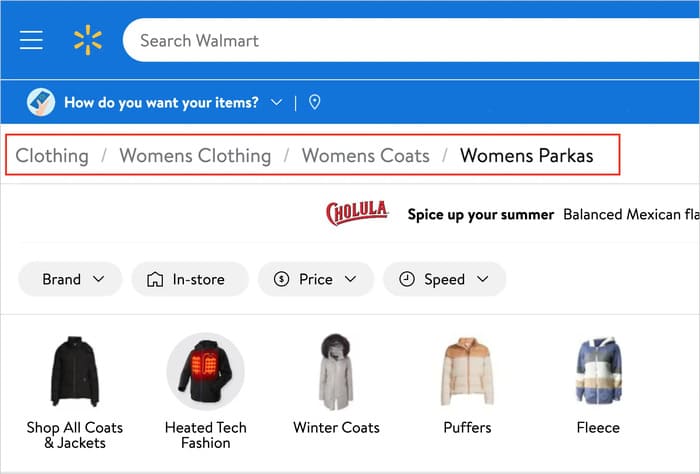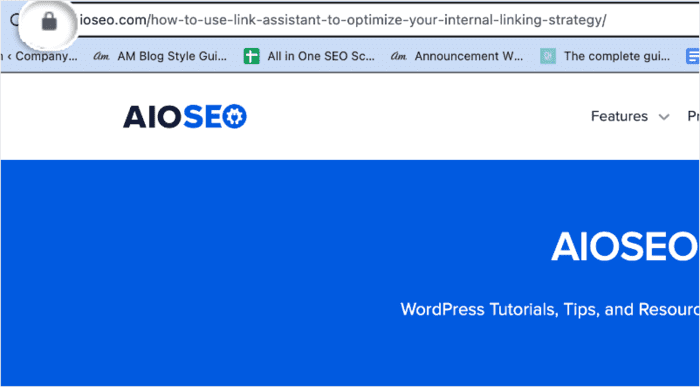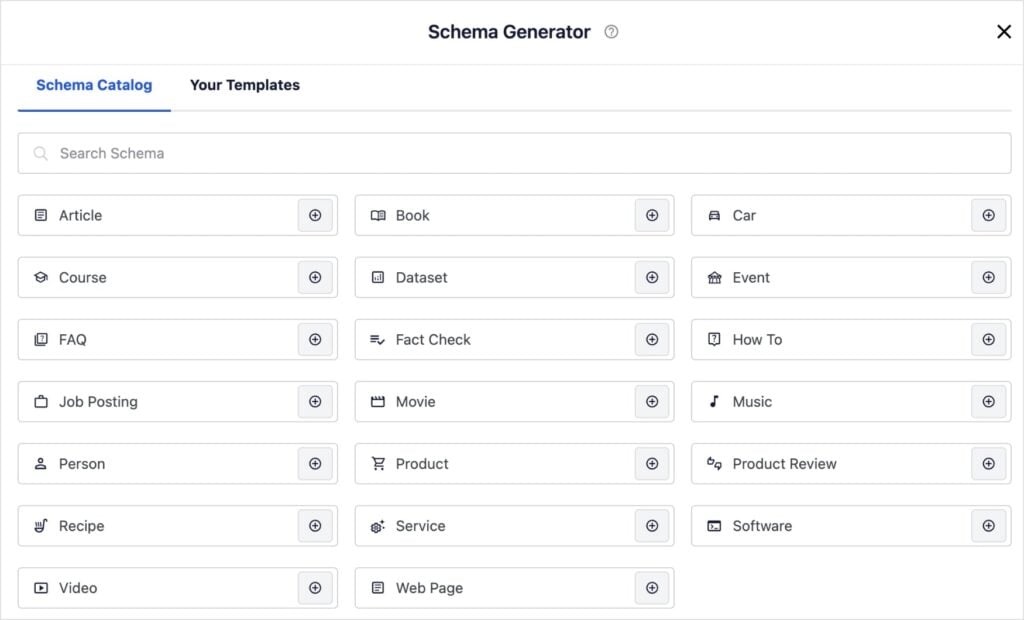Looking for an effective eCommerce SEO checklist to help you drive traffic and generate sales?
In the highly competitive world of ecommerce, search engine optimization (SEO) is crucial for driving organic traffic, increasing visibility, and ultimately boosting sales. An effective ecommerce SEO strategy can help you outrank your competitors, attract more qualified leads, and maximize your eCommerce return on investment (ROI).
In this article, we’ll look at some elements to include in your ecommerce SEO checklist to help you optimize your online store and achieve your sales goals.
The Importance of an Ecommerce SEO Checklist
An eCommerce SEO checklist provides a roadmap to enhance your online store’s visibility and user experience. Here are some key benefits:
Increased Visibility and Traffic
One of the biggest benefits of SEO is that it increases your online visibility. By optimizing your eCommerce site for search engines, you increase the chances of appearing higher in search results for relevant keywords, driving more organic traffic to your online store.
Enhanced User Experience (UX)
Many SEO best practices, such as optimizing site structure, navigation, and page load times, directly contribute to an improved user experience (UX), which can lead to higher engagement and conversion rates.
Competitive Advantage
An optimized eCommerce website can give you a significant edge over competitors who are not prioritizing SEO, allowing you to capture a larger share of the market.
Improved Conversion Rates
By providing a seamless and optimized user experience, along with relevant and engaging content, you can increase the likelihood of visitors making a purchase, leading to higher conversion rates and sales.
As an eCommerce store owner, prioritizing SEO is important as it helps maximize your customer acquisition efforts, resulting in faster business growth.
Now that you know the importance of eCommerce SEO, let’s dive straight into our eCommerce SEO checklist.
One of the first items to put in your eCommerce SEO checklist is to ensure you have the right SEO tool to help your store and product pages rank. And for WordPress users, there’s no better tool than All In One SEO (AIOSEO).
AIOSEO is a powerful yet easy-to-use SEO plugin with 3+ million active installs. Millions of smart bloggers use AIOSEO to boost their search engine rankings and drive qualified traffic to their online stores. The plugin has many powerful features and modules designed to help you properly configure your SEO settings.
When it comes to eCommerce SEO, some of AIOSEO’s most prominent features include:
The WooCommerce SEO Moudule
If you’re a WooCommerce user, AIOSEO has a tailor-made WooCommerce SEO module. This is designed to help you rank your eCommerce store higher in search rankings. The module makes it easy for you to optimize, among other things, your:
- Product titles and meta descriptions
- Product images
- Product descriptions
Next-gen Schema Generator
Schema markup, also called structured data, is essential to helping search engines better understand your content and products. Implementing it helps boost search rankings and encourages engagement on SERPs. I’ll explain this powerful strategy in a moment so you see why it deserves to be on your eCommerce SEO checklist.
Author SEO
While mainly aimed at authors, the Author SEO module is important for eCommerce merchants as it helps you demonstrate Google E-E-A-T signals. This is especially important for eCommerce businesses in the YMYL (your money, your life niches) niches.
Other examples of SEO modules you’ll find in AIOSEO include:
- Search Statistics: This powerful Google Search Console integration lets you track your keyword rankings and see important SEO metrics with 1 click, and more.
- SEO Revisions: Track any changes you make to your site and see their impact on your SEO. Plus, you get to see on a timeline how Google updates affect your site.
- Advanced Robots.txt Generator: Easily generate and customize your robots.txt file for better crawling and indexing.
For step-by-step instructions on how to install AIOSEO, check out our installation guide.
2. Nail Your Ecommerce Keyword Research
Conducting thorough keyword research is the foundation of any successful eCommerce SEO strategy. By identifying the right keywords and phrases your target customers are searching for, you can optimize your product pages, category pages, and content to rank higher in search results.
Some of the most useful tools for eCommerce keyword research include:
LowFruits: Helps you find low competition, high potential keywords and content gaps on SERPs.
Google Keyword Planner: Provides search volume and competition data for keywords.
Semrush: Offers in-depth keyword research and competitor analysis capabilities.
Ahrefs: Provides detailed insights into keyword difficulty and search trends.
When conducting keyword research, focus on both primary keywords (high-volume, competitive) and long-tail keywords (lower volume, more specific). Long-tail keywords can be particularly valuable for eCommerce, as they often indicate a higher purchase intent from the user.
3. Ecommerce Technical SEO Optimization
By working on your technical SEO, you can create a solid foundation for your eCommerce SEO strategy and improve your chances of ranking higher in search results, driving more qualified traffic, and boosting sales.
Site Structure and Navigation
Optimizing the site structure and navigation is a crucial aspect of eCommerce technical SEO. Start by ensuring your URL structure is user-friendly and easily crawlable by search engines.
Apart from URL structure, consider implementing breadcrumb navigation.

This will improve the overall user experience and help search engine bots understand your site’s hierarchy. Additionally, focus on improving page load times by:
- Optimizing images
- Leveraging caching techniques
- Minimizing HTTP requests.
An optimized site structure helps keep visitors on your site longer and reduces bounce rates. As a result, your sales will go up.
Mobile Optimization
Mobile optimization is another critical factor in eCommerce SEO. With 59% of all search traffic coming from mobile devices, it’s essential to ensure your eCommerce site is mobile-friendly. A few ways to do this include:
- Use a responsive design
- Optimize images and videos specifically for mobile devices
- Adopt a mobile-first approach in every element of your site and content design
Mobile optimization is essential if you’re to cater to the growing mobile audience. It will also help ensure you drive more sales and grow your business.
Check out our list of mobile SEO tools to help you level up this aspect of eCommerce SEO.
Site Security and SSL
Site security and SSL implementation are also vital for eCommerce websites as they help visitors trust you with their personal information. That’s because search engines display a lock icon for secure websites.

Secure your site with HTTPS to protect sensitive customer data and improve trust and credibility. It also helps boost your SEO as search engines prefer to send users to sites that have HTTPS implemented.
Implement Schema Markup
Schema markup provides search engines with additional information about your products and business, potentially enhancing search result snippets and helping improve your search rankings.

Relevant schema types you should consider adding to your site include:
Adding all these types of schema is super easy with AIOSEO’s next-gen Schema Generator.

You can easily add schema markup with just a few clicks—you don’t even need any technical or coding knowledge.
For more tips, check out our guide on conducting a technical SEO audit.
By working on your technical SEO, you can create a solid foundation for your eCommerce SEO strategy and improve your chances of ranking higher in search results, driving more qualified traffic, and boosting sales.
4. Ecommerce OnPage SEO Optimization
On-page optimization should be a key element of every eCommerce SEO checklist. This includes many factors which we’ll look at below:
Product Page Optimization
To optimize your product pages for search engines, it is crucial to craft compelling product titles and descriptions that incorporate relevant keywords. This helps search engines understand the content and relevance of your product pages, making them more likely to appear in search results.
Additionally, optimizing product images and media can improve the visual appeal and user engagement on your product pages. This can be achieved by compressing images, using alt tags, and ensuring that images are properly sized for different devices.
Furthermore, incorporating relevant keywords throughout the product page content can enhance the page’s relevance and ranking for specific search queries.
Category Page Optimization
Category pages in eCommerce are essentially virtual departments within your online store. Just like walking into a specific section of a physical store (shoes, clothing, electronics), category pages group similar products together on your website.
This is why category page optimization should be a crucial part of your eCommerce SEO checklist.
Optimizing category page titles and meta descriptions can help attract the right audience and improve the page’s visibility in search results. A few ways to do this include:
- Optimize category page titles and meta descriptions with relevant keywords and accurate descriptions.
- Incorporate longtail keywords that match the user’s search intent.
- Provide unique, informative content on category pages to improve relevance and user engagement.
Doing this will not only help boost your SEO but also encourage customers to easily find the products they’re looking for. Both can result in more sales for your business.
Content Creation and Optimization
Developing a content strategy that supports your eCommerce business goals is essential for driving traffic and conversions. That’s why it must be included in your eCommerce SEO checklist. Your eCommerce content should include everything from blog posts to product pages to landing pages and more.
A few tips for eCommerce content creation and optimization include:
- Develop a content strategy for your ecommerce site: Create valuable content such as blog posts, buying guides, and how-to articles to attract organic traffic and establish yourself as an authority in your niche.
- Optimizing blog posts, guides, and other content: Integrate relevant keywords, optimize titles and meta descriptions, and use internal linking to connect related content.
- Leveraging internal linking: Build internal links to improve site structure and distribute link equity throughout your website.
5. Ecommerce Off-page SEO Optimization
Off-page SEO refers to the steps you take outside of your eCommerce site to improve its search engine rankings. Some items to tick off on your eCommerce off-page SEO checklist include:
Link Building
Link building is a crucial aspect of eCommerce SEO as it helps improve your site’s authority and credibility in the eyes of search engines. It also helps you tap into the traffic of the sites that link to your store. Some strategies to help you build high-quality backlinks include:
- Identify authoritative sites in your niche: Start by researching websites in your industry that have high domain authority and relevance to your products. Use tools like Ahrefs, Semrush, or Moz to evaluate their domain authority and backlink profiles.
- Create valuable content: Produce high-quality, shareable content that other sites would find valuable enough to link to. This could include blog posts, infographics, case studies, and research reports.
- Outreach campaigns: Send personalized emails to authoritative sites, offering your content as a resource they can link to. Highlight how your content adds value to their audience.
- Broken link building: Identify broken links on relevant websites and offer your content as a replacement. This not only helps the site owner but also earns you a backlink.
- Participate in niche forums and communities: Engage in industry-specific forums and online communities. Provide valuable insights and link back to relevant pages on your site when appropriate.
- Leverage guest posting: Reach out to influencers and bloggers in your industry and offer to write a guest post for their site. Make sure to include a link back to your website in your author bio or within the content.
These tactics will help you build relevant backlinks fast, resulting in a boost in search rankings and traffic.
For more tips, check out our link building guide.
Social Media Presence
Social media is an essential component of eCommerce SEO as it helps improve your online visibility and engagement. Here are some strategies to optimize your social media presence:
- Optimize your social media profiles for search engines: Ensure that your social media profiles are complete, up-to-date, and optimized for search engines. Use relevant keywords in your profile descriptions and include links to your website.
- Encourage social sharing and engagement: Encourage your followers to share your content and engage with your brand. You can do this by creating shareable content, running social media contests, and responding to comments and messages.
- Utilize social signals as part of your overall SEO strategy: Social signals, such as likes, shares, and comments, can help improve your website’s visibility and ranking. Utilize social media analytics tools to track your social signals and adjust your strategy accordingly.
For more information, check out our article on SEO and social media. It will give you insights on leveraging social media to bolster your SEO efforts.
6. Measurement and Optimization for Ecommerce
Tracking and analyzing performance is essential for understanding and improving your eCommerce SEO efforts. Using tools like Google Analytics and Google Search Console allows you to monitor vital aspects such as traffic, conversions, and overall SEO performance.
The best part is that connecting your site to Google Search Console is super easy with AIOSEO. You don’t even have to jump through the hoops of copying and pasting verification codes.

Check out our tutorial on connecting your site to Google Search Console for more information.
By closely tracking key SEO metrics and KPIs, including organic traffic, bounce rate, and conversion rate, you can effectively gauge the impact and efficiency of your SEO strategies.
Continuous optimization is critical in maintaining and enhancing your eCommerce site’s performance. Regularly review and update your SEO strategy to ensure you remain aligned with the latest eCommerce SEO best practices and industry trends.
Additionally, staying adaptable to algorithm changes and shifts in the eCommerce landscape allows you to adjust your approach proactively, keeping your site competitive and relevant in search engine results.
Ecommerce SEO Checklist: Your FAQs
What is an ecommerce SEO checklist?
An eCommerce SEO checklist is a comprehensive guide outlining the key steps and best practices for optimizing an eCommerce site for search engines. It covers various aspects such as:
- Keyword research
- On-page SEO
- Technical SEO
- Content creation and optimization
- And more
These help increase visibility, traffic, and sales.
Is SEO an ongoing process for eCommerce businesses?
SEO is a continuous effort. Regularly monitor your website analytics and search console data to track your progress. Stay updated on the latest SEO trends and best practices to maintain a competitive edge.
SEO is a continuous effort. Regularly monitor your website analytics and search console data to track your progress. Stay updated on the latest SEO trends and best practices to maintain a competitive edge.
We hope this post has helped you know what to include in your eCommerce SEO checklist and how to create one. You may also want to check out other articles on our blog, like our guide to common SEO mistakes to avoid or our article on the benefits of SEO for small businesses.
If you found this article helpful, then please subscribe to our YouTube Channel. You’ll find many more helpful tutorials there. You can also follow us on X (Twitter), LinkedIn, or Facebook to stay in the loop.
Disclosure: Our content is reader-supported. This means if you click on some of our links, then we may earn a commission. We only recommend products that we believe will add value to our readers.



